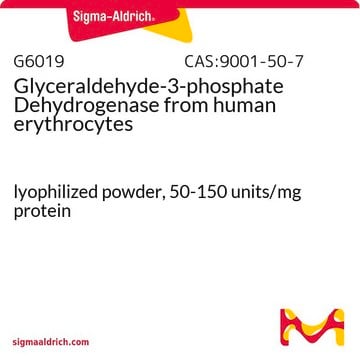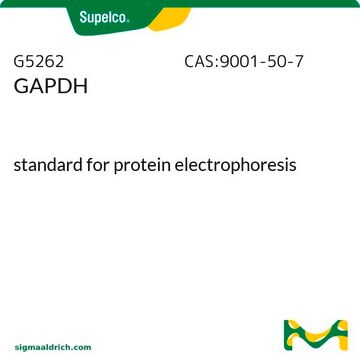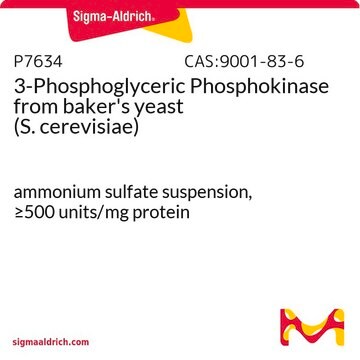SRE0024
Glyceraldehyde-3-phosphate dehydrogenase human
recombinant, expressed in Escherichia coli
Sinônimo(s):
D-Glyceraldehyde-3-phosphate: NAD+ oxidoreductase (phosphorylating), GAPDH, Triosephosphate dehydrogenase
Selecione um tamanho
R$ 2.151,00
Selecione um tamanho
About This Item
R$ 2.151,00
Produtos recomendados
recombinante
expressed in E. coli
Nível de qualidade
atividade específica
≥80 units/mg protein
temperatura de armazenamento
−20°C
Categorias relacionadas
Descrição geral
Aplicação
Ações bioquímicas/fisiológicas
Definição da unidade
forma física
Outras notas
Palavra indicadora
Warning
Frases de perigo
Declarações de precaução
Classificações de perigo
Eye Irrit. 2
Código de classe de armazenamento
11 - Combustible Solids
Classe de risco de água (WGK)
WGK 3
Ponto de fulgor (°F)
Not applicable
Ponto de fulgor (°C)
Not applicable
Escolha uma das versões mais recentes:
Certificados de análise (COA)
Não está vendo a versão correta?
Se precisar de uma versão específica, você pode procurar um certificado específico pelo número do lote ou da remessa.
Já possui este produto?
Encontre a documentação dos produtos que você adquiriu recentemente na biblioteca de documentos.
Os clientes também visualizaram
Active Filters
Nossa equipe de cientistas tem experiência em todas as áreas de pesquisa, incluindo Life Sciences, ciência de materiais, síntese química, cromatografia, química analítica e muitas outras.
Entre em contato com a assistência técnica










